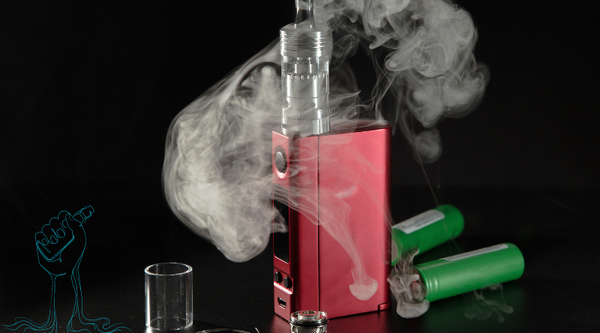There are two common ways to consume dry herbs: smoking and vaping. Every technique, though, has a unique set of health consequences. It's critical to comprehend the distinctions between vaping and smoking dry herbs in order to make wise consumption decisions. This article will discuss the hazards involved in each way of vaping and smoking dry herbs, as well as their respective health impacts.
Smoking Dry Herbs:
Smoking dry herbs involves burning the herbs and inhaling the smoke. This method has been practiced for centuries and is associated with certain risks to health. Here are the key factors to consider:
1. Inhalation of Toxins
When dry herbs are burned, they release harmful toxins and carcinogens into the smoke. These toxins include tar, carbon monoxide, benzene, and ammonia. Inhaling these substances can have serious consequences for respiratory health. Long-term smoking can lead to conditions such as chronic bronchitis, emphysema, and even lung cancer. Additionally, secondhand smoke from smoking dry herbs can also expose others to these harmful chemicals.
2. Impact on the Respiratory System
Smoking dry herbs can have a negative impact on the respiratory system. The heat from the burning herbs irritates the lungs and airways, leading to inflammation. This can cause symptoms such as coughing, wheezing, and shortness of breath. Over time, this irritation can result in chronic respiratory conditions and reduced lung function. Individuals with pre-existing respiratory conditions, such as asthma, may experience worsened symptoms from smoking dry herbs.

3. Dependence and Addiction
One of the risks of smoking dry herbs is the potential for dependence and addiction. Some herbs contain compounds, such as nicotine, that can be addictive. Regular smoking can lead to a physical and psychological dependence on the herbs, making it difficult to quit. Addiction can have detrimental effects on overall health and well-being, affecting multiple aspects of life.
4. Odor and Social Impact
Another factor to consider when smoking dry herbs is the odor and social impact. Smoking produces a distinct smell that can linger on clothing, furniture, and in indoor spaces. This can be bothersome to others and may lead to social discomfort or stigma. Additionally, smoking in public spaces may be regulated or prohibited, limiting where individuals can consume dry herbs.
Vaping Dry Herbs:
Vaping dry herbs involves using a vaporizer device to heat the herbs without combustion. This method has gained popularity as a potentially safer alternative to smoking. Here are some important considerations when it comes to vaping dry herbs:
1. Reduced Toxin Inhalation
Vaping dry herbs eliminates the combustion process that occurs during smoking. As a result, there is a significant reduction in the inhalation of harmful toxins and carcinogens. While vaping still produces some byproducts, the levels of toxins are generally lower compared to smoking. This can be beneficial for respiratory health and may reduce the risk of developing smoking-related illnesses.
2. Potential for Temperature Control
A major advantage of vaping dry herbs is the ability to control the temperature of the vaporizer. Different herbs have specific temperature requirements for optimal vaporization, and vaping allows users to customize their experience accordingly. By adjusting the temperature, individuals can avoid the release of potentially harmful substances and preserve the desired compounds in the herbs.
3. Limited Odor and Discretion
Compared to smoking, vaping dry herbs produce less noticeable odor and dissipate more quickly. This can be advantageous for individuals who prefer a more discreet method of consumption. Vapers often choose devices that allow for minimal scent production, ensuring that the use of dry herbs remains private and does not disturb others around them.
4. Lack of Long-Term Research
While vaping dry herbs may offer certain advantages over smoking, it is important to note that the long-term effects of vaping are still being studied. This is particularly true for the newer generation of vaporizers and their specific impact on respiratory health. As the technology continues to evolve, further research will provide a clearer understanding of the risks and benefits associated with vaping dry herbs.
Advantages of Smoking
- Quick and easy method
- Full flavor and aroma
- Immediate effects
Advantages of Vaping
- Healthier alternative
- Less smell
- Controlled temperature
Smoking Vaping Produces smoke with harmful toxins Produces vapor with fewer toxins Stronger taste and smell Milder taste and smell
Whether you choose smoking or vaping dry herbs is a personal decision. Consider the advantages of each method and choose what best suits your lifestyle and preferences.

Key Takeaways:
- Smoking dry herbs involves burning the herbs and inhaling the smoke, while vaping dry herbs involves heating the herbs without combustion.
- Vaping dry herbs is generally considered a healthier alternative to smoking, as it produces fewer toxins and harmful byproducts.
- When smoking dry herbs, the combustion process can release harmful chemicals and tar, which can negatively impact lung health.
- Vaping dry herbs allows for better temperature control, resulting in a more efficient and controlled release of the active compounds.
- While smoking dry herbs can offer a quick and potent effect, vaping dry herbs provides a smoother and cleaner taste.
Frequently Asked Questions
When it comes to consuming dry herbs, there are two popular methods: smoking and vaping. Both methods have their pros and cons, and it's essential to understand the differences between them. In this FAQ, we will answer some common questions related to smoking vs vaping dry herbs.
1. What is the difference between smoking and vaping dry herbs?
Smoking dry herbs involves combustion, where the herbs are heated directly, causing them to burn and release smoke. On the other hand, vaping dry herbs involves heating the herbs at a lower temperature, which produces vapor but avoids the combustion process. This allows for a smoother and less harsh experience compared to smoking.
When smoking dry herbs, the smoke contains various harmful substances, such as tar and toxins, which can be harsh on the lungs. Vaping dry herbs, on the other hand, eliminates many of these harmful compounds, making it a potentially healthier option.
2. Which method provides a better taste - smoking or vaping dry herbs?
Vaping dry herbs generally provides a purer and more flavorful experience compared to smoking. Since vaping involves heating the herbs at lower temperatures, it allows for the extraction of specific flavors and compounds without burning them. This results in a cleaner taste and a more enjoyable vaping experience.
When smoking dry herbs, the combustion process can cause the herbs to burn unevenly, resulting in a less consistent taste. Additionally, the smoke produced during combustion can mask the original flavor of the herbs.
3. Does vaping dry herbs have fewer health risks compared to smoking?
Vaping dry herbs has been considered a potentially safer alternative to smoking due to the absence of combustion and the harmful by-products it produces. Since vaping eliminates the burning process, it prevents the release of many toxic substances found in smoke, such as carbon monoxide and particulate matter.
However, it's important to note that vaping is not completely risk-free. Some studies suggest that certain chemicals present in vaping liquids may have their own associated health risks. It is crucial to use high-quality vaping devices and trusted products to minimize potential health hazards.
4. Which method is more efficient in utilizing dry herbs - smoking or vaping?
Vaping dry herbs is generally more efficient in terms of herb utilization. Since vaping involves heating the herbs at lower temperatures, it allows for better extraction of the beneficial compounds, resulting in a longer-lasting session.
In contrast, smoking dry herbs involves burning the herbs at high temperatures, which can cause them to combust quickly. This can result in wasted herbs and a shorter session.
5. What are the equipment requirements for smoking and vaping dry herbs?
When it comes to smoking dry herbs, a variety of traditional smoking methods can be used, such as pipes, bongs, and rolling papers. These methods require the herbs to be ignited directly.
For vaping dry herbs, specialized vaporizers designed for dry herb consumption are required. These vaporizers heat the herbs at lower temperatures, allowing for vaporization without combustion. There are different types of dry herb vaporizers, including portable vaporizers, desktop vaporizers, and vape pens.
After examining the pros and cons of smoking and vaping dry herbs, it becomes clear that vaping offers several advantages over traditional smoking methods. Vaping eliminates the harmful effects of smoke, such as tar and carbon monoxide, making it a healthier option for those who enjoy consuming dry herbs. Additionally, vaping allows for greater control over temperature settings, resulting in a more customized and enjoyable experience.
Conclusion:
Smoking and vaping dry herbs have distinct health effects, with smoking being associated with a higher risk of respiratory issues and addiction. Vaping, on the other hand, offers a potentially safer alternative for consuming dry herbs, with reduced toxin inhalation and greater discretion. However, it is important to note that both methods have their own set of risks and uncertainties. Individuals should carefully consider their preferences and health concerns when choosing between smoking and vaping dry herbs.

















